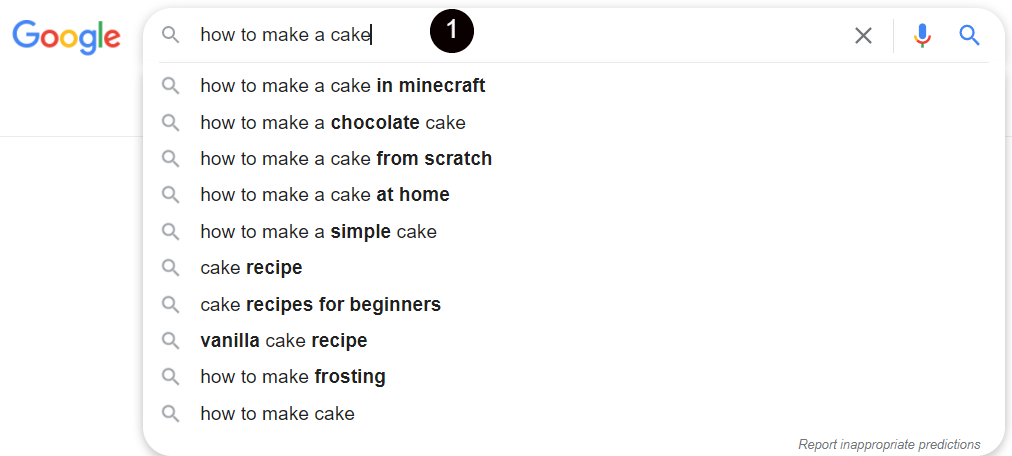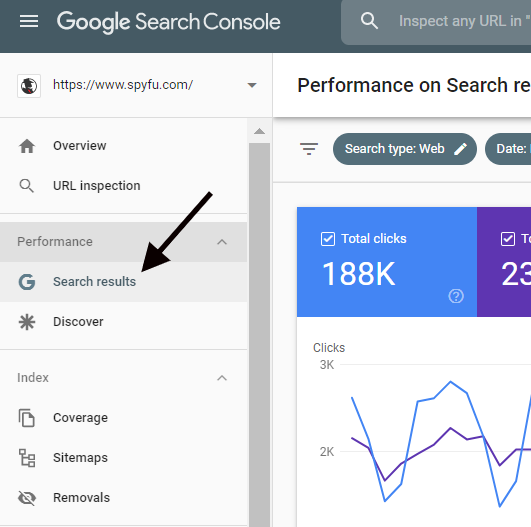Over the past decade, Google has fundamentally changed how it categorizes knowledge—moving from strings to things. In other words, Google used to organize pages based on what keywords they contained, without bothering to understand those keywords’ meaning. Now, Google can understand how related terms and ideas connect and guess at the intent of a person doing a particular search. If you’re still optimizing for only a single primary keyword, you’re behind the times, and you’re hurting your rankings. Secondary keywords can help.
Secondary keywords support your primary keyword by addressing the subtopics and nuances that readers want to know about when they use a search engine. Optimizing for these secondary keywords proves to Google that you understand the “things” that your keywords refer to—and that your readers want to understand. The better your article satisfies user intent, the better your overall rankings. As a bonus, you’ll be able to rank for some of your long-tail secondary keywords as well, which over time can add up to a lot of extra traffic.
The bottom line is—when you write with secondary keywords, your content becomes better for readers. They help you structure your work so that every article you create isn’t an answer to a single keyword. Instead, your work is a well-rounded embodiment of all “things” important to the searchers who want to know more about this topic, no matter how broad or narrow. If you want to rank for more keywords, use the ideas you find in secondary keywords to make your content better match search intent, and focus on natural writing where keywords are included only when they fit the flow of the article. Nowadays, good content is good SEO—improve the quality of what you write for the internet, and search traffic will follow.
How to Find the Right Secondary Keywords
When picking secondary keywords, consider two factors: search intent and search volume. The secondary keywords you choose should help you fulfill the search intent for your primary keyword, and search volume should help you determine whether that keyword should be included in your current article, made into its own article, or excluded altogether.
Google’s SERPs
Google’s search engine results pages (SERPs) are the easiest places to find secondary keywords and subtopics that will satisfy search intent; Google does almost all of the work for you.For instance, let’s look at the auto-complete suggestions and SERP for “how to make a cake.”


When analyzing a SERP for secondary keywords, pay attention to:
- Auto-complete suggestions: Find useful long-tail suggestions that could become H2s or H3s in your writing. For instance, “how to make frosting” could be a good H2 on your “how to make a cake” article.
- The “People also ask” section: These questions can also work as headers in your article. For this example: “What are the ingredients used in baking a cake?” Also, two questions mention “steps.” Putting that word in your title could help match search intent.
- Other ranking pages on the SERP: Examine their title, headers, content, and meta descriptions to look for secondary keywords that often pop up. These articles must be doing something right in terms of search intent, so learning from them can help you beat their articles in the future.
- Bolded words throughout the SERP: When Google bolds words on the SERP, whether in the auto-complete section, in page meta descriptions, or anywhere else, it is telling you that these words are related to the search query. For example, bolded words like “prepare” and “how to bake a cake” can show Google that your “how to make a cake” content is thorough and satisfying users’ search intents.
- The Related Searches Section: Use this section in the same way you have the “People also ask” and auto-complete suggestions. Note the bolded words, look for recurring patterns, and consider whether any of these searches could make good headers.
As you write down your secondary keyword ideas, divide them between Latent Semantic Indexing (LSI) keywords and related keywords. LSI keywords (sometimes called tertiary keywords) are secondary keywords that are synonyms of your primary keyword. For instance, “how to bake a cake” would be an LSI keyword for “how to make a cake,” as they describe the same thing in different words. There is some debate about the usefulness of LSI keywords, but including them can make your writing better; no one wants to read the same keyword or phrase every couple of sentences.
On the other hand, related keywords are secondary keywords that describe a similar but not identical concept. In our example, “how to make a chocolate cake” would be a related keyword because it’s more specific than just “how to make a cake.” “Cake ingredients” would also be a related keyword because it describes a subtopic that is essential for understanding and satisfying the search intent behind your primary keyword.
Always consider relevance. Some secondary keywords won’t be relevant to your article or even be remotely useful in a future article. For example, the secondary keyword “how to bake a cake in Minecraft” won’t ever be useful to a baking website. When you’re done, you should have a long list of secondary keyword candidates that satisfy search intent. Now we can check each of their metrics using a keyword research tool.
SEO Keyword Research Tools
Keyword tools like SpyFu can help you find related keywords and evaluate their potential search volumes. You should check each of your secondary keywords in a keyword research tool because:
- Some of your secondary keywords might get enough traffic to warrant being their own page
- You want to prioritize the most promising secondary keywords, so you have a better chance of ranking for them
- You may find related keywords that weren’t found on the SERP
Start by putting your secondary keywords into our Related Keywords tool. If you don’t have a SpyFu account, you can still get basic results for free, including keyword volume and keyword difficulty (KD).

Work through your list, adding each keyword’s volume and KD statistics.
Occasionally, you’ll come across a secondary keyword whose traffic rivals your primary keyword and is its own distinct concept (not a synonym). In these cases, it might be worth setting it aside for future content ideas. For instance, “easy chocolate cake recipe” could easily work as its own article apart from “how to make a cake,” and the volume would make the effort worth the reward. You can learn more about choosing primary and secondary keywords by reading our guide to keyword research.
Also, keep an eye on other related keywords that you can add to your list. Each time you add a keyword to the SpyFu keyword research tool, you’ll get other keywords it believes are similar to those you searched for. Having more secondary keyword options to pick from in the next step will only help you improve your content, so don’t be afraid of filling in things that weren’t included on the SERP analysis.
You should now have all of your secondary keyword research done. It’s time to learn how to put this information to work so you can make better content that ranks for more keywords.
How to Use Your Secondary Keywords
Effective secondary keyword usage boils down to picking the best secondary keywords to support your primary, effectively using headers, and working in secondary keywords naturally. As you work through these steps, remember that good writing should never be sacrificed for an extra keyword placement. The most important role of secondary keywords in SEO is to improve user experience through better, more helpful content.
1. Understand Your Content Goal and Pick Your Secondary Keywords
Before you can pick the right secondary keywords, you need to know the aim of your content. Primary keywords can often have multiple search intents with various angles that you could approach a piece. For instance, “how to make a cake” could be taken in a number of ways, including:
- How to Make a Cake: A Beginner’s Guide
- How to Make a Cake for the Best Birthday Ever
- How to Make a Cake: 10 Recipes Perfect for Any Baker
Although each of these will share an instructional aspect, their audiences and content will differ. If you aren’t sure which angle would work best for you, consider taking a deeper dive into search intent to determine what searchers are looking for with this keyword. You can also skim your secondary keyword list for inspiration on where to take this article.
Once you know the goal and scope of your content, you can start to pick out secondary keywords that will help you expand into subtopics that your searchers want to know more about.
Add any secondary keyword that fits the scope and goal of your content to a new list. Put related keywords at the top of your new list and LSI keywords at the bottom. Then, look at your relevant keywords and order them based on their volume and KD, with the highest volume, lowest difficulty keywords at the top. Finally, if any keywords strike you as potential headers, make a note beside them; we will work with these in the next step.
2. Pick Your Titles and Headers Carefully While Outlining
Outlining is key to writing great content that satisfies user intent because you can adjust the scope of your article before you write, helping you avoid missing subtopics you wanted to talk about or having to cut carefully written words because your piece is running too long. Building an outline will also help you work in your secondary keywords naturally, as you can place important ones in your headers (if possible) and make a note of which secondary keywords might fit into each section of your writing. Taking some time now will make it easier for you to include these secondary keywords as you write instead of cramming them in after the fact.
Your most important secondary keywords should ideally find a place in your headers. There is some evidence to suggest that header and title placement, especially H1s and H2s, can help you rank for keywords. When planning your headers, keep two important principles in mind:
- Fit your primary keyword into your H1 and one H2 before you focus on secondary keyword placement
- Headings help readers first and SEO second
This second point is the most important. Headers help readers navigate and skim an article. When headers have been tortured to fit keywords, it can be obvious to readers, make your content feel spammy, and reduce skimmability. With Google’s focus on page experience metrics, it is more important than ever to put readers first. So use headers naturally, but keep an eye open for ways to include secondary keywords when you have the opportunity.
The same rules apply to your titles. Titles ideally will fit your primary keyword and potentially a secondary keyword if possible. However, the first goal of your title should be to convince people to click through to your content. Make your title catchy and interesting; focus on keywords later, and your SEO will thank you. You can learn about title tag optimization and how to write meta tags in our how-to guides.
3. Write Normally and Avoid Keyword Stuffing
No matter how often keyword density calculator myths get debunked, content creators still swear by them. There is no ideal keyword density; write for your readers in the most engaging, clear way possible, and your organic traffic will benefit.
Just as we mentioned with headers and titles, you want to keep your body paragraphs focused on the readers, not on keyword density. The best way to include your secondary keywords and keep your writing natural is to keep a list of keywords you want to have in a section, review them before you write that section, and then include them if you can.
If you’re finding your writing is getting repetitive, pull out your LSI keyword list and use synonyms to freshen up your work. You don’t need to use all of them, but it can be monotonous to read the same primary or secondary keyword sentence after sentence.
Finally, don’t sweat it if you cannot include a keyword, especially long-tail keywords that are awkward to fit into sentences. With Google’s shift from strings to things, adding these keywords is far less important than covering the idea of these keywords and optimizing for user experience. When we looked at keyword density across 42 top-ranking articles, we found that 12 never even included the exact keyword phrase they ranked for.
Reevaluate and Reoptimize Your Content
SEO optimization is not done after your work is published. After you release your work, let it sit for about six months, and then see how it is doing. If the article has shown promise, you can refresh it by targeting the keywords it is already ranking for.
If you aren’t sure which keywords your content is ranking for, you can use Google Search Console (GSC) to find out easily.
Start by signing into your GSC, and then click on “Google Search” under “Performance.”

Next, click on the “+” sign at the top of the page to add a filter. In the drop-down menu, choose “page.”

You want to only look at data from this one particular page. So grab its URL, add it on the line, and press apply.

Now, scroll down to the queries section and sort by impressions— the number of times your page appeared on the SERP. This will give us the search queries entered into Google that brought your page onto the SERP, organized by the highest number of impressions.

Since you appear on a SERP for these search terms, you must be at least ranking in and around the top 10, as most people only have Google default to 10 listings per page. If you’re getting high impressions but low clicks, your page is either low down on the page or not convincing people that it has what they are looking for.
To check where you are on the SERP, you can use our ranking tool to check or Google your keyword on incognito and see where you show up. Seeing the SERP can also let you know what readers see when they come across your site, so you can diagnose any issues with your title or meta description that might be putting people off.
From here, go back through our optimization steps—adding your new secondary keywords throughout your page’s body, headers, and title. If a perfect keyword has come up in GSC that looks like it has enough to be its own section, don’t be afraid to add to the original. If the section is too large, then this might be the beginning of an all-new article you can write.
There’s More to Ranking Than Keywords
As Google becomes more sophisticated, its reliance on keywords becomes more and more reduced. If you want to stay ahead of the curve, you need to keep current with how to write content that search engines will serve their users. Understanding how to find and use secondary keywords is just one way you can achieve that goal.
Most recently, Google’s focus has been on improving the quality of pages on the SERP, emphasizing reliability, page experience, and satisfying search intent. If you want to make sure your organic traffic continues to grow, consider learning more about BERT—Google’s new natural language model—so you can build your keyword numbers and develop your organic traffic.

